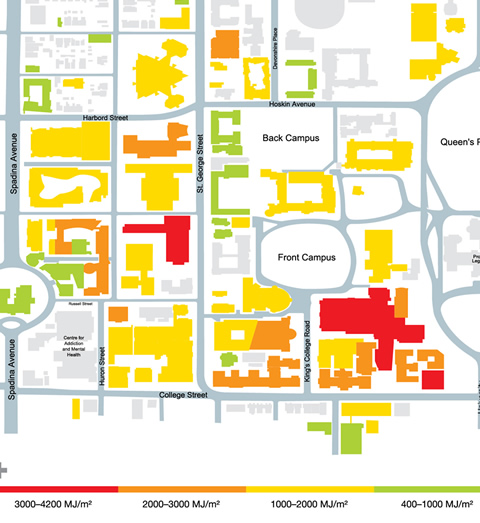Keeping a campus the size of St. George warm in winter, cool in summer and humming smoothly all year round requires energy – and lots of it. This map, produced by U of T’s Sustainability Office, shows the buildings that gulp down fuel and those that sip it. Lash Miller Chemical Laboratories, shaded red, is among the most intense energy users, at 3,120 megajoules a year per square metre, while the new LEED-certified exam centre on McCaul Street, is among the least, at 670 megajoules. (Generally, buildings with labs require more energy per square metre than those without.)
Ron Swail, assistant vice-president of Facilities and Services, says the data helps his office identify where to focus their conservation efforts to reduce U of T’s environmental footprint overall. Over the past 35 years, he estimates that good environmental practices have saved the university $200 million on utility bills and avoided a million tonnes of greenhouse gas emissions.
Recent Posts
U of T’s 197th Birthday Quiz
Test your knowledge of all things U of T in honour of the university’s 197th anniversary on March 15!
Are Cold Plunges Good for You?
Research suggests they are, in three ways
Work Has Changed. So Have the Qualities of Good Leadership
Rapid shifts in everything from technology to employee expectations are pressuring leaders to constantly adapt






